A review of calf housing
John Donlon MVB PGDip VCP MRCVS PhD student, University College Dublin Herd Health Group, is one of the contributors to the new CalfCare leaflet on calf-housing design recently produced by Animal Health Ireland’s CalfCare Technical Working Group. Here, he looks at the important role that housing plays in preventing disease and producing healthy, happy calves
Introduction
Practitioners that work with cattle in Ireland will know that respiratory disease is a significant cause of calf mortality. In the all-island disease surveillance report from regional veterinary laboratories, respiratory disease was diagnosed as the cause of 11% of deaths in calves under one month of age and 30% of deaths in calves aged between one and five months of age. This does not tell the full story, however, as many calves can be affected with pneumonia without dying and, instead, have reduced growth rates and possibly even poor performance as adults compared to their counterparts that were unaffected by pneumonia.
Respiratory disease is highly variable from farm to farm. Like many other diseases, it is influenced not only by the pathogens present on the farm, but also by management routines and the environment in which calves are being kept. As veterinary practitioners, we often only become aware of a farm’s struggle with pneumonia when we are called to treat clinically sick animals. Often at this point, we might be asked for advice around the management of pneumonia or what diagnostics are available.
This article will primarily focus on the interaction between calves and their environment. However, it is important to point out that the housing environment is only one component of respiratory disease. Immunity, nutrition, general husbandry, and management of stressors are some of the other factors that must be considered. It is important all advice is bespoke and tailored to the specific issues of each farm. When conducting farm investigations on pneumonia, it is vital to first define the problem you are being faced with to allow for a more focused approach. We can define problems both in terms of the time period during which they occur (pre-weaning or post-weaning) or the location where they occur (outdoors or indoors/across all housing/or one particular house). Once we have defined a problem, we can evaluate the magnitude of it by assessing the number of animals treated or the number of animals that died according to the case definition. The accuracy of mortality and morbidity records can vary considerably from farm to farm. Treatment records, although useful, may not be sufficiently accurate indicators to understand the extent of the problem on farm.
Often, we are forced into a pathogen hunt to determine the specific bugs involved and time and effort as well as resources may be put into diagnostics that although they have a role, are very likely to be the same set of viruses and bacteria already involved. Although important, diagnostics should only be part of the toolkit used in investigating and addressing pneumonia on farm, and a full housing and environment assessment should also be undertaken.
If we are going to go to the effort of procuring samples on farm, it would be remiss not to also discuss with the herdsperson, the management timelines of calves, focusing on stress events such as disbudding and movement between pens. Some of the worst affected herds which we have visited have also had significant issues with failure of passive transfer and this may warrant investigation.
Unfortunately, most advice around calf housing is not based on robust peer-reviewed literature, but instead on experience and expert opinion. When assessing existing calf housing, there are four key areas that should be examined. Is the calf house:
1. Ventilated with fresh air, well distributed?
2. Draught-free?
3. Warm and dry?
4. Clean and cleanable?
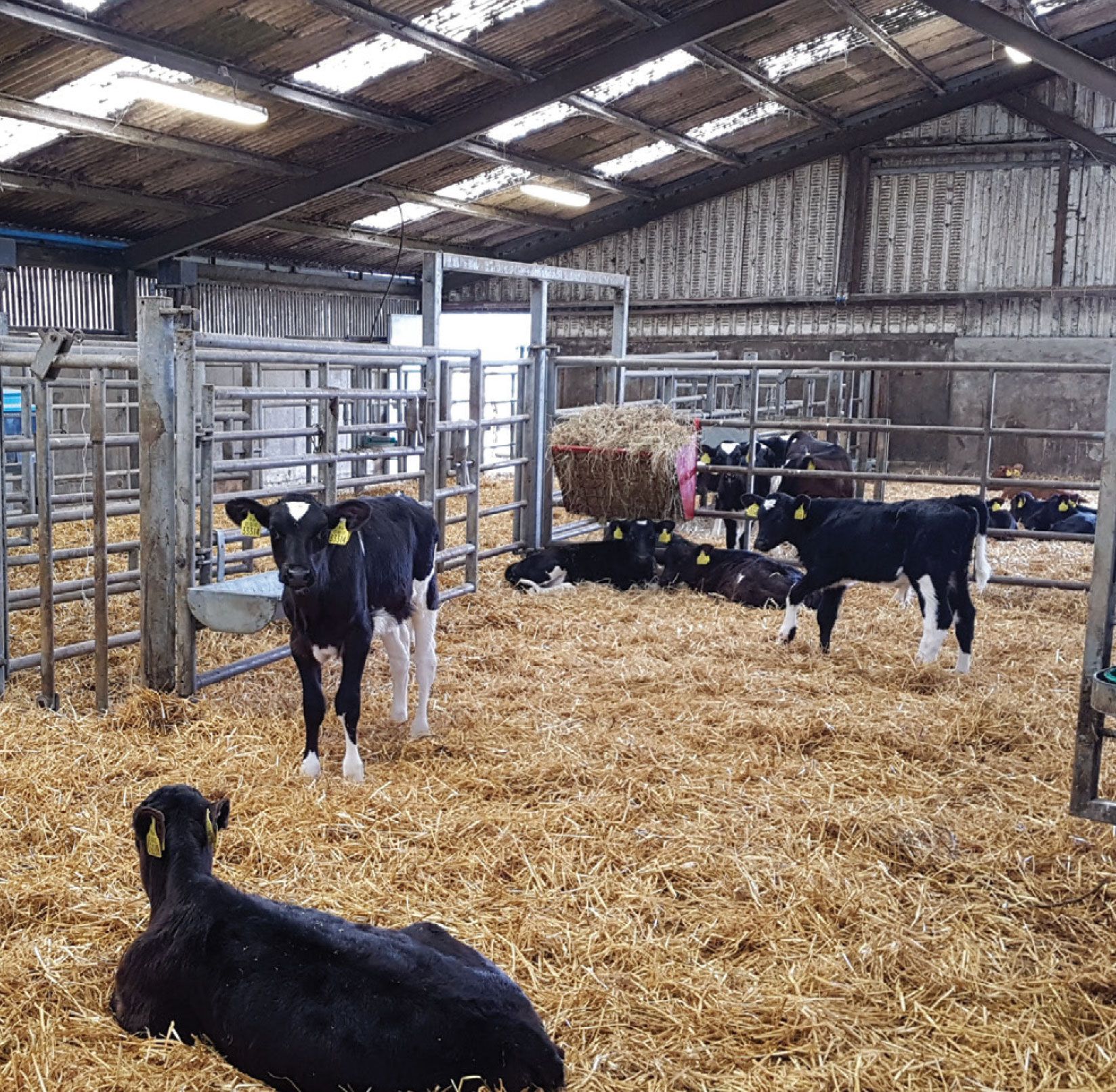
Figure 1: The calf house should be well ventilated, warm, dry and cleanable. Photo: Animal Health Ireland.
Tools that are useful to have when assessing a calf house include a laser measure/measuring tape, a camera and a notebook for writing down measurements. Often smoke bombs are used as part of shed ventilation appraisal and can be useful tools to visually demonstrate to farms a lack of ventilation. However, they are not strictly necessary as they are highly reliant on weather conditions on the day they are used.
Ventilation
One assumption that is often incorrectly made is that the heat generated by calves is enough to drive air movement inside a shed by what is known as the ‘stack effect’. This assumption is false, at least for pre-weaned dairy calves in large sheds. In a non-mechanically ventilated shed that houses young pre-weaned dairy calves, the only force that will drive air movement is the outside environment, ie. the wind. In other words, the only natural ventilation is that of the wind effect and we have this effect to some extent most days of the year. Some experts in the field of dairy calf housing would argue that naturally ventilated sheds will always go through periods of under ventilation and should by default have mechanical ventilation. Mechanical ventilation in calf houses refers to positive pressure ventilation where a system is designed to introduce fresh air into the shed and distribute it evenly. This system is the only way to ensure controlled ventilation. For a spring calving system such as predominates in Ireland, where calf houses are often unoccupied for a lot of the year, it may be better to maximise the natural wind effect ventilation. However, undoubtedly mechanical ventilation via positive pressure ventilation systems is widely adopted as the gold standard by many housing experts. In terms of ventilation, it technically is the ventilation rate that is important, which means we are concerned with the number of air changes in a calf shed per hour. Air is vital to diluting the level of airborne pathogens within the shed as well as reducing the concentration of noxious gases such as ammonia. It is possible to make a strong appraisal of a shed and recommend improvements to ventilation based on the following criteria:
1. Shed orientation and location
Ideally, the long axis of the shed should be perpendicular to the prevailing wind, which in Ireland is typically west or south west. It is also important to consider whether other structures within the farmyard, such as silage pits or other sheds, may restrict or block airflow to a shed. Calves should not share the same airspace as older animals. It is not uncommon to find sheeting being taken down between calf housing and adjacent cow housing to promote ventilation, but this thought process is flawed and should be avoided. If it is the case that shed location restricts exposure to wind, then mechanical ventilation should be considered.
2. The outlet design and size
It is vital that an outlet is present. The minimum outlet required for younger calves is 0.04m2. A rough calculation of the existing outlets in the roof is very useful ie. for typical ridges it will be the length of the shed by the width of the gap. The aim is to prevent the accumulation of damp, dirty air in the roof space. Outlets are ideally in the ridge, but any potential aperture in the roof such as skylights or chimneys can be used or adapted. The most useful design detail in an outlet in the ridge is the upstand, as this creates a negative pressure at the ridge for all the time the wind is blowing, helping ventilation. Beware of ridge cowls, where the open ridge is protected from above, but horizontal inlets are provided on either side of the ridge. These catch the wind all the time the wind is blowing and create a positive pressure at the ridge. They do not extract dirty air and can lead to down draughts. Protected ridges that allow air out of the building without letting rain fall in are preferred.
3. Inlets
It is important that the air is coming in from outside and not from another shed where older cattle are housed or milked. Inlets should be divided equally across the two long walls and the total inlet required should be calculated from the outlet required. This is essential, as even though we do not rely on the stack effect for natural ventilation in typical young calf houses, we still must use a mathematical calculation to work out required outlet for the maximum stocking rate in the shed and only then, once we know the required outlet can we calculate the required inlet. Of course, for existing sheds we need to measure the available outlet and inlet and make an assessment if it is sufficient. To calculate the area of inlet you must first have calculated the outlet size. Once you have the outlet size, an inlet should be between two and four times the size of the outlet meaning that, at a minimum, inlets should be 0.08m2 per calf. The inlet is provided most safely by a series of very small openings that limit draught and keep rain out. Once the area of inlets has been calculated, then the cladding material can be chosen. The length of the building is multiplied by the height of the porous cladding material that is fitted above the wall which is multiplied by the relative porosity of the material. Porosity of some common materials used as side cladding include:
Figure 1: The calf house should be well ventilated, warm, dry and cleanable. Photo: Animal Health Ireland.
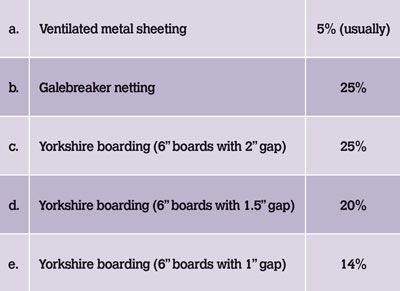
4. Building width and roof pitch
It is easier to provide fresh air well distributed in narrower rather than wider buildings. The slope of the roof should have a pitch of 17°-22°, the lower the pitch of the roof, for example, on a lean-to shed, the higher the risk of poor ventilation.
5. Mechanical ventilation
This is used very successfully in some calf houses, with positive pressure tube ventilation (PPTV) being the most used. PPTV is where fresh air is blown in through a plastic or polythene tubes with carefully placed ventilation holes which are calculated bespoke to the shed by a trained specialist in PPTV. It is important that tubes are produced for specific houses as they will be designed with specific stocking densities and shed design in mind.
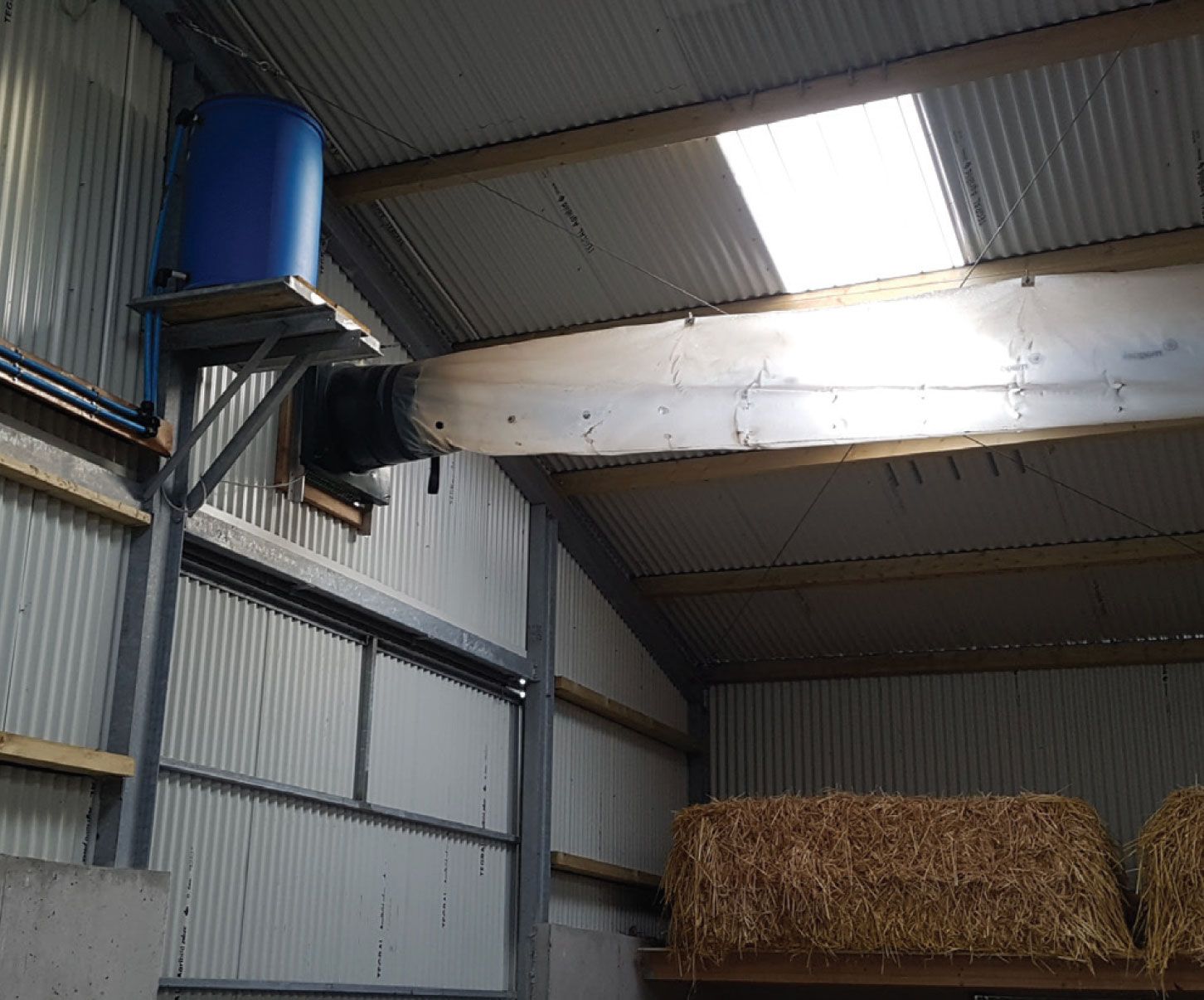
Figure 2: Positive pressure tube ventilation is the most used mechanical ventilation. Photo: Animal Health Ireland.
Once you have conducted the above measurements it is important to find out what the maximum stocking density of the shed is and see if the current inlets and outlets can support the maximum number of calves.
Draughts
Draughts are closely related to ventilation and, in our attempts to produce a calf house with good ventilation, we risk creating one where airspeed at calf level is fast enough to result in a chill effect, as well as the possibility of drying out the mucociliary escalator. This is a vital part of a calf’s respiratory defence mechanism. No clear definition for a draught exists, although a figure of >0.5m/s at calf level has been used previously. It is possible to measure windspeed at calf level using an anemometer. However, appraising the level of draught in a shed based on one visit is problematic as draught potential can be highly variable depending on the weather. Close attention should therefore be paid to the building design. There should be no air inlets, including open doors, below four feet from the ground. Doors must be kept closed at all times. Sheds cannot rely on open doorways for ventilation. If parts of the door are needed to provide air inlet in the short term, consider cladding the top half of the door with ventilated sheets of Galebreaker type product. Fix rubber flaps with tech screws around sliding doors to a height of four feet to block gaps and at the hinges of swinging doors.
Temperature and moisture
Temperature within a shed and the level of moisture are both interdependent and can both act to increase the amount of energy expended on a calf maintaining its body temperature. The optimal air temperature for calves under three weeks old is 15-20oC. This is difficult to achieve in Ireland from January to April, when most calf houses are operational, but there are multiple ways to mitigate this. Calves require plenty of straw bedding, deep enough for them to ‘nest’ so that when they are lying down it covers their hocks. Straw bedding is the most effective of commonly used bedding materials because it allows for effective nesting behaviour where sawdust or woodchip will not. Calves will benefit from breathable calf jackets for the first 30 days. However, before moving a jacket onto another calf, they must be washed. If this is not possible or practical, do not use jackets on calves. Wet bedding reduces the effective temperature in the shed for the calves due to the latent heat of vaporisation, while also allowing for pathogens to survive and spread more easily. If you kneel down and your waterproofs are appreciably wet, this is a sign that the calf pen is too damp and may need to be topped up with bedding more regularly. The floor underneath the bedding will also be a contributing factor to how dry the bedding is. Concrete floors should be smooth without cracks, ridges or potholes and have a 1:20 slope, from the back of the pen to the front, running into drains that should have, ideally a 1:60 slope. A 1:100 slope can be used to take effluent out of the house but would be recommended to be made of smooth pipes/drains to facilitate the rapid discharge of effluent from the house.
If an existing floor does not drain well, and creates unnecessary areas of damp and dirt, it will continue to do so forever until drainage is added or the floor changed. Channels (75x75mm) may be cut into existing concrete floors where practical, and epoxy resin mortar used to create a shallow channel. Or create a raised edge to direct dirty water where you want it. It is always useful to ensure that drinkers are functioning correctly and not leaking.
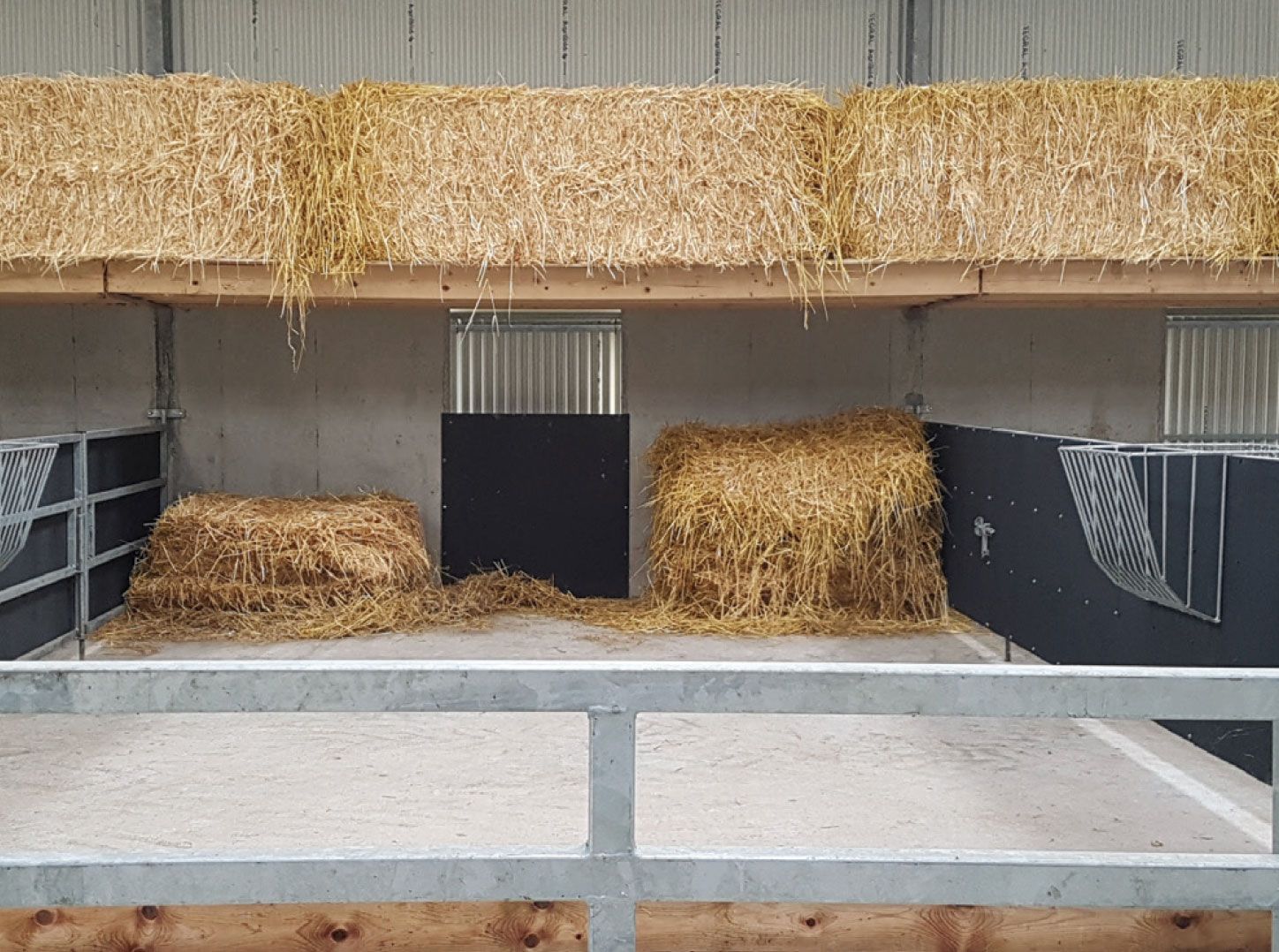
Figure 3: Temperature and moisture are key considerations when housing calves. Photo: Animal Health Ireland.
Ease of cleaning
The ease of cleaning calf housing is vital in reducing overall disease incidence, not just pneumonia.
Broken surfaces, such as old stone walling, broken plaster/concrete/mortars, rusted gates and old timbers are extremely difficult to clean and remove pathogens from effectively. Repair or remove those impossible-to-clean surfaces. Apply new render to walls at above animal height; use epoxy resin paints on relatively smooth surfaces and use steam cleaning and detergents BEFORE disinfectants. Only when the shed is empty of calves should it be power washed, steam cleaned, disinfected and then left to dry out over the summer. Effective cleaning means: the removal of all organic matter; use of a relevant disinfectant at the right dilution for the required contact time; and washing and drying. As Ireland is a seasonal calving system, we must recognise that all facilities will get dirtier as the calving season progresses. Consider how to create a practical break at pen level within the calving season to effectively clean facilities. Good system design will acknowledge the absolute need for effective cleaning and, therefore, enough space to create empty pens.
New shed design
In some cases, as a veterinary practitioner, you may be asked for recommendations around new housing. The same principles as above apply, especially around housing location. However, in this instance, you will have more scope to make recommendations. Areas such as isolation pens are often overlooked when building new housing but are of vital importance in disease management. These must be situated as far away as possible from healthy calves. It should not be necessary to walk past the sick pen on the way to care for healthy calves, and ideally the isolation pen would have a separate entrance to the main calf shed. Waste must drain directly out of the sick pen and not past the other calf pens. Partitions between pens should be at least 1.2m high to help reduce nose to nose contact between pens and we should aim for 2m2 per calf (<150kg bodyweight) in pen floor space. All these steps will help to prevent disease spreading to healthy calves.
Other housing
Other housing is, of course, available and can be used very successfully depending on how it is managed. Hutches provide a suitable alternative with less initial cost to farmers. A good calf hutch will be well-ventilated (as a calf can produce the stack effect in a hutch) and by its nature will reduce the risk of disease transmission. However, there are a number of caveats associated with hutches, the primary one being farmer comfort. Its hutches are outside the herdsperson in charge of calf care will be exposed to the elements at all times, which can mean calves are not tended to at the same level on days of particularly extreme weather. The surface on which the hutches are placed is important and if the drainage around the hutches is poor you will run into the same problems as in a calf shed.
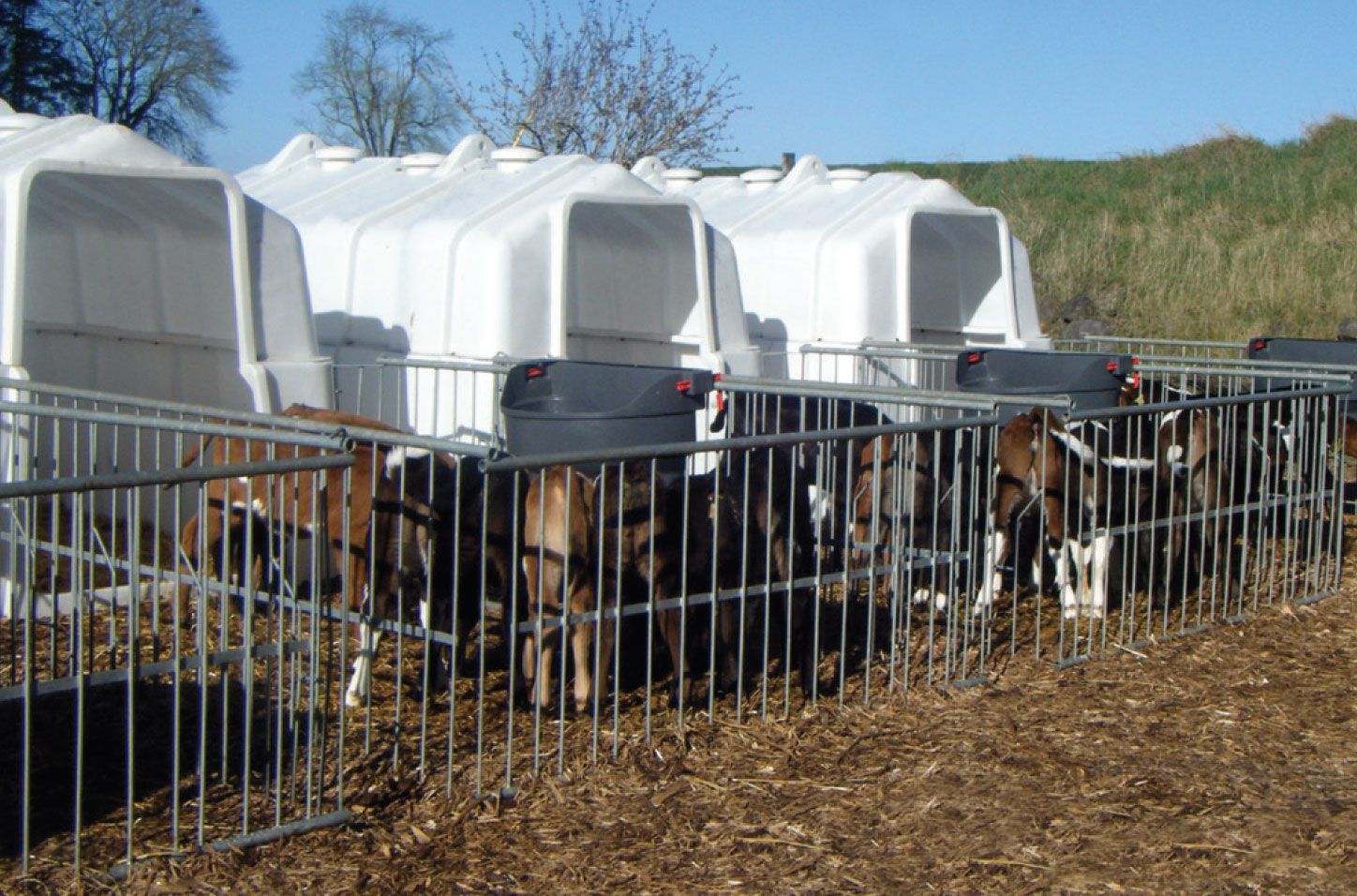
Figure 4: Hutches provide a suitable alternative with less initial cost to farmers. Photo: Animal Health Ireland.
Recent UCD study findings
Research in UCD currently ongoing, funded by Dairy Research Ireland, is looking at the association between the environment and calf pneumonia. We have found that performing thoracic ultrasound of batches of calves can provide an insight into the current prevalence of pneumonia in a group of calves. This can be repeated after interventions to assess its effectiveness. Recent work on calf housing so far has demonstrated that it is an area that is highly variable throughout the country. The mean prevalence of respiratory disease detected using both thoracic ultrasound and Wisconsin scoring was 14%, with some of the farms visited reaching a 50% prevalence for respiratory disease. Forty-six per cent of the farms that were surveyed said that the house that they reared their dairy calves in was not originally constructed for the purpose of calf rearing, and 70% of farms surveyed had made alterations to sheds to address pneumonia. The herd-health advice of the attending veterinary practitioner can make a real impact by advising on the whole package of calf respiratory disease including colostrum management, calf nutrition, stocking rate, specific disease management and, importantly, assessment of and advice in, the promotion of an optimal calf environment. Calf sheds assessed in the study so far were only 0.7oC warmer than outside, with some sheds actually being colder. This serves to emphasise the lack of a stack effect in the absence of a temperature differential and how important feeding and bedding management within calf houses is.
Conclusion
There are a number of ways to construct calf housing, but these will vary depending on the system of management on each farm. It is important to try and tailor the recommendations that we have made around housing to fit the individual farmer’s needs. Ultimately, the calf house and environment must not be a deterrent to calf health or welfare.
-
AHDB. 2013. Better Returns Programme Plus: Better cattle housing design.
-
AHDB. 2018 Better Returns +. Better Calf Housing. https://ahdb.org.uk/knowledge-library/better-calf-housing
-
Lago A, McGuirk S, Bennett T, Cook N et al. 2006. Calf respiratory disease and pen microenvironments in naturally ventilated calf barns in winter. J. Dairy Sci. 89(10):4014-4025.
-
Miller-Cushon EK and DeVries TJ. 2016. Effect of social housing on the development of feeding behavior and social feeding preferences of dairy calves. J. Dairy Sci. 99(2):1406-1417. doi:https://doi.org/10.3168/jds.2015-9869.
-
Nordlund KV and Halbach CE. 2019. Calf barn design to optimize health and ease of management. Veterinary Clinics: Food Animal Practice 35(1):29-45.
-
Teagasc. 2016. Teagasc Beef Manual.
-
Teagasc. 2017. Teagasc Calf Rearing Manual.















